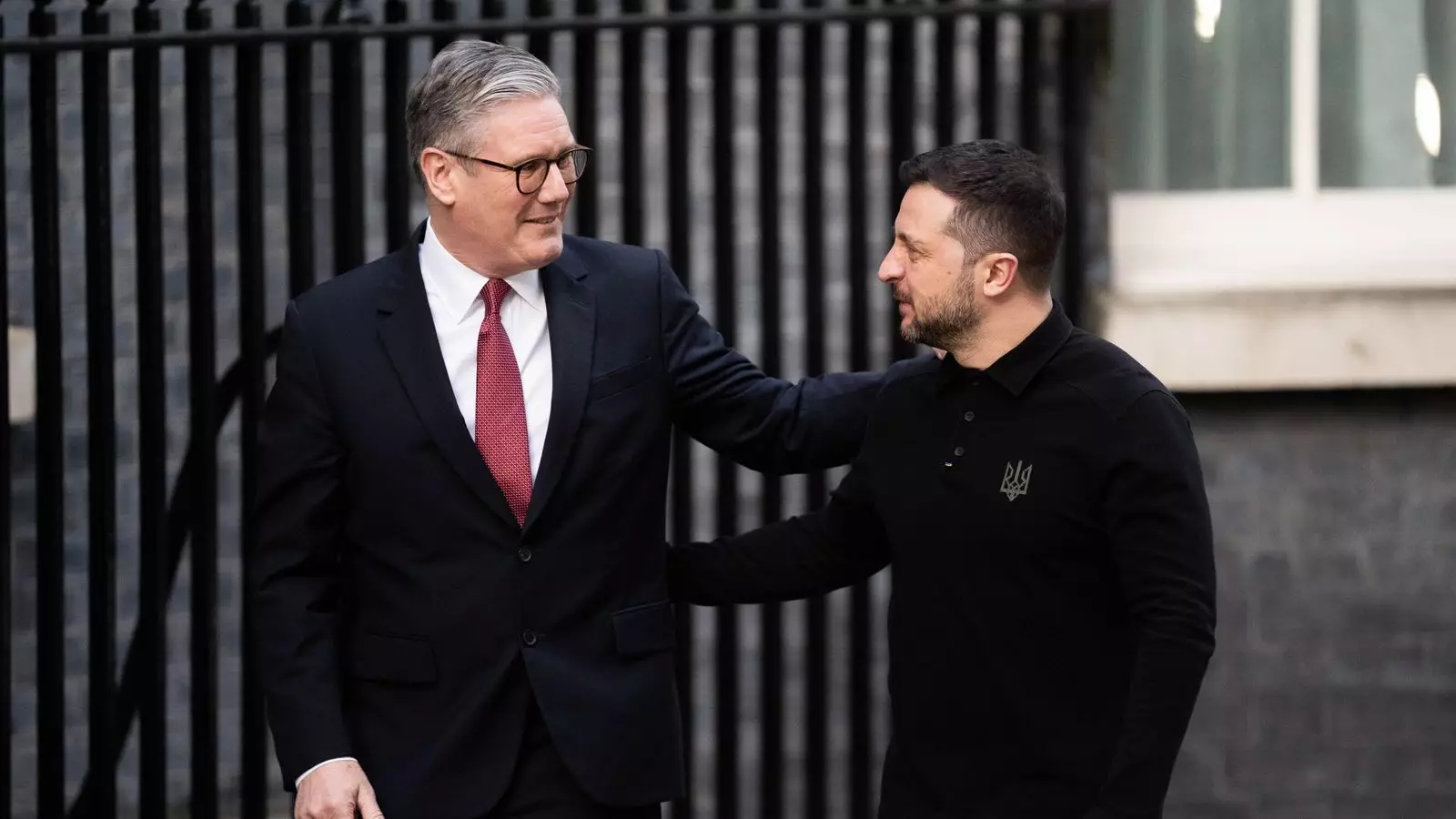The geopolitical landscape surrounding the ongoing conflict in Ukraine has rarely been as convoluted as it is today. Recent developments, marked by confrontational exchanges at the highest levels of power, underscore the fragility of international relations. This complexity was brought to the forefront during Prime Minister Sir Keir Starmer’s visit to Washington, where he navigated a tense atmosphere fraught with implications for European security and global diplomacy. The interaction between U.S. President Donald Trump and Ukrainian President Volodymyr Zelenskyy in the Oval Office serves as a microcosm of the broader struggle for peace in Ukraine, revealing both the hurdles and opportunities inherent in global diplomacy.
One cannot overlook the discomfort experienced as Starmer observed the tumultuous exchange between Trump and Zelenskyy. His remarks convey a palpable sense of unease regarding the lack of decorum in high-level negotiations. The Prime Minister articulated a pressing need for collaboration, emphasizing the importance of constructing a pathway toward “lasting peace.” His anxiety reflects a broader apprehension within Europe about the potential for escalating tensions to spiral out of control.
Starmer’s assertion that he does not trust Vladimir Putin underscores a crucial aspect of the diplomatic dialogue: the inherent mistrust that complicates peace efforts. This skepticism, shared by many leaders, stems from historical precedents of aggression and expansionism linked to the Russian leader. Consequently, the call for security guarantees is not merely a strategic maneuver; it reveals a foundational lack of confidence in Russia’s intentions, necessitating robust security frameworks from allies.
The collaboration between the UK, France, and Ukraine signifies an attempt to harmonize efforts in addressing the Ukrainian crisis while involving the United States as a pivotal player. Starmer’s assertion that he perceives Trump’s desire for lasting peace suggests a nuanced understanding of American foreign policy, albeit one that is complicated by Trump’s tendency for unpredictable discourse. The Prime Minister’s willingness to communicate directly with both Trump and Zelenskyy indicates a commitment to a multifaceted diplomatic strategy, one that seeks to engage all relevant stakeholders constructively.
As discussions unfold around a ceasefire plan, the involvement of the United States becomes increasingly critical. The potential endorsement of U.S. security assurances could serve to bolster Ukraine’s position and deter further aggression from Russia. Starmer’s advocacy for a “backstop” on Ukrainian security reflects an awareness of the stakes involved; such commitments may extend beyond simple rhetoric, requiring tangible support that reinforces the territorial integrity of Ukraine.
In outlining the “components of a lasting peace,” Starmer highlights a crucial narrative: any sustainable solution must empower Ukraine both militarily and diplomatically. The rationale behind fostering a “strong Ukraine” is rooted in the recognition that peace without power can be an ephemeral concept; a well-defended country is less likely to be subjected to future aggression. This element of strength is complemented by calls for broader European security measures, aimed at establishing a deterrent against potential threats.
Starmer’s gatherings with key European leaders—including French President Emmanuel Macron—underscore the necessity for a cohesive European response to the crisis. The notion of solidarity among European nations is paramount, as disunity could embolden hostile actors. The current discourse among leaders is not merely about mitigating an immediate crisis but rather about redefining a collective approach to long-term stability and security in Europe.
With rising tensions and complex relationships defining the responses to the Ukrainian conflict, diplomatic engagement involves a careful balancing act. The differing perspectives within and among nations—which include proposed British troop deployments as peacekeepers—indicate the varied approaches being considered towards achieving peace. Political leaders like Ed Davey express a willingness to commit forces under specific conditions, showcasing a readiness to actively participate in maintaining stability.
However, leaders must tread cautiously, ensuring that any decisions made do not escalate hostilities further. Kemi Badenoch, the Conservative leader, amounts a pragmatic recognition that U.S. involvement is critical. This acknowledgment resonates with the sentiment that European nations must maintain strong ties with the U.S. to prevent potential disengagement that could lead to a broader conflict involving America.
As the diplomatic efforts evolve, the path to peace in Ukraine remains fraught with challenges and uncertainties. Trust, collaboration, and a unified approach are essential components for creating a peaceful resolution. The turbulence observed in high-profile encounters serves as a reminder of the stakes at hand and the importance of fostering dialogue within and among nations. As alliances are forged and strategies delineated, the hope remains that enduring peace can eventually prevail over the discord of conflict.


Leave a Reply